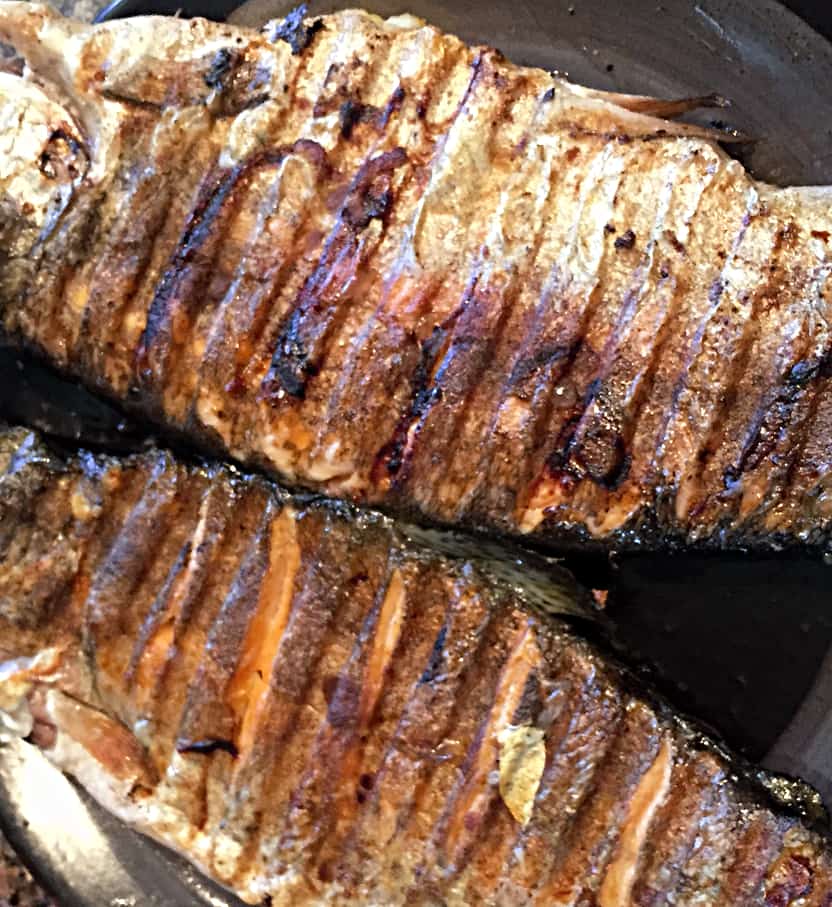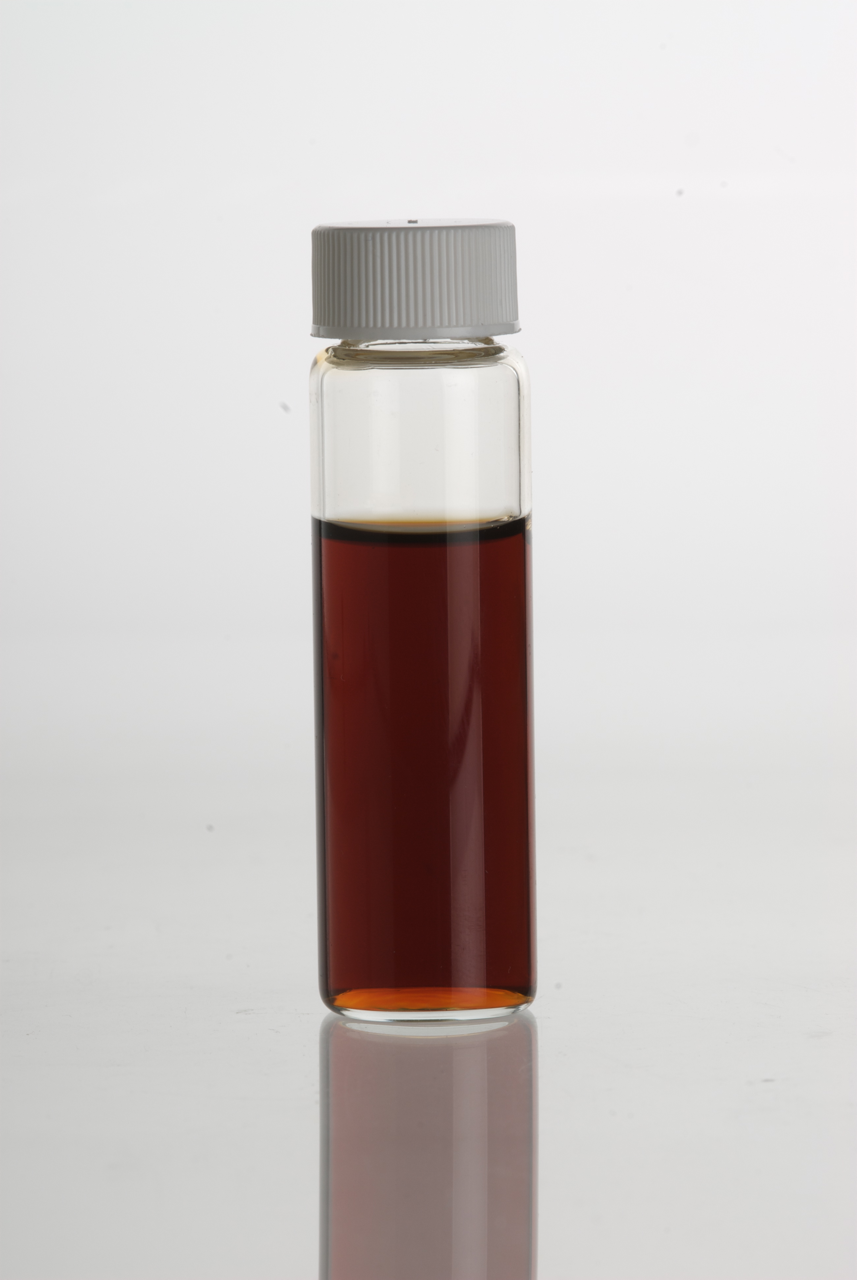Trout vs. Vanilla Extract
Nutrition comparison of Cooked Trout and Vanilla Extract
Ever wonder how your favorite foods stack up against each other in terms of nutrition?
We compared the nutritional contents of
cooked
trout
versus
vanilla extract
(100g each)
below using 2020 USDA and NIH data[1].
For a quick recap of significant nutrients and differences in trout and vanilla extract:
- Both vanilla extract and trout are high in calories.
- Trout has 125.5 times less carbohydrates than vanilla extract.
- Trout has 315.2 times less sugar than vanilla extract.
- Trout has more thiamin, niacin, Vitamin B6, folate and Vitamin B12, however, vanilla extract contains more pantothenic acid.
- Trout has signficantly more Vitamin A than vanilla extract.
- Trout has signficantly more Vitamin D than vanilla extract.
- Trout is an excellent source of potassium and protein.
- Vanilla extract has 218.5 times less saturated fat than trout.
USDA sources for nutritional information: Trout (Trout, cooked, NS as to cooking method) and Vanilla Extract (Vanilla extract) . Have a correction or suggestions? Shoot us an email.
Calories and Carbs
calories
Both vanilla extract and trout are high in calories. Vanilla extract has 40% more calories than trout - vanilla extract has 288 calories per 100 grams and trout has 205 calories.
| Trout | Vanilla Extract | |
|---|---|---|
| Protein | 49% | ~ |
| Carbohydrates | ~ | 17% |
| Fat | 51% | ~ |
| Alcohol | ~ | 82% |
carbohydrates
Trout has 125.5 times less carbohydrates than vanilla extract - vanilla extract has 12.7g of total carbs per 100 grams and trout has 0.1g of carbohydrates.
sugar
Trout has 315.2 times less sugar than vanilla extract - vanilla extract has 12.7g of sugar per 100 grams and trout has 0.04g of sugar.
Protein
protein
Trout is an excellent source of protein and it has 405 times more protein than vanilla extract - vanilla extract has 0.06g of protein per 100 grams and trout has 24.4g of protein.
Fat
saturated fat
Vanilla extract has 218.5 times less saturated fat than trout - vanilla extract has 0.01g of saturated fat per 100 grams and trout has 2.2g of saturated fat.
cholesterol
Vanilla extract has less cholesterol than trout - trout has 72mg of cholesterol per 100 grams and vanilla extract does not contain significant amounts.
Vitamins
Vitamin C
Trout has more Vitamin C than vanilla extract - trout has 3.4mg of Vitamin C per 100 grams and vanilla extract does not contain significant amounts.
Vitamin A
Trout has signficantly more Vitamin A than vanilla extract - trout has 87ug of Vitamin A per 100 grams and vanilla extract does not contain significant amounts.
Vitamin D
Trout has signficantly more Vitamin D than vanilla extract - trout has 64.6iu of Vitamin D per 100 grams and vanilla extract does not contain significant amounts.
Vitamin E
Trout has more Vitamin E than vanilla extract - trout has 3.3mg of Vitamin E per 100 grams and vanilla extract does not contain significant amounts.
Vitamin K
Trout and vanilla extract contain similar amounts of Vitamin K - trout has 4.5ug of Vitamin K per 100 grams and vanilla extract does not contain significant amounts.
The B Vitamins
Trout has more thiamin, niacin, Vitamin B6, folate and Vitamin B12, however, vanilla extract contains more pantothenic acid. Both trout and vanilla extract contain significant amounts of riboflavin.
| Trout | Vanilla Extract | |
|---|---|---|
| Thiamin | 0.14 MG | 0.011 MG |
| Riboflavin | 0.11 MG | 0.095 MG |
| Niacin | 6.811 MG | 0.425 MG |
| Pantothenic acid | ~ | 0.035 MG |
| Vitamin B6 | 0.375 MG | 0.026 MG |
| Folate | 12 UG | ~ |
| Vitamin B12 | 4.47 UG | ~ |
Minerals
calcium
Trout has 182% more calcium than vanilla extract - vanilla extract has 11mg of calcium per 100 grams and trout has 31mg of calcium.
iron
Vanilla extract and trout contain similar amounts of iron - vanilla extract has 0.12mg of iron per 100 grams and trout has 0.39mg of iron.
potassium
Trout is an excellent source of potassium and it has 213% more potassium than vanilla extract - vanilla extract has 148mg of potassium per 100 grams and trout has 463mg of potassium.
Omega-3 and Omega-6
omega 3s
For omega-3 fatty acids, trout has more alpha linoleic acid (ALA), DHA, EPA and DPA than vanilla extract per 100 grams.
| Trout | Vanilla Extract | |
|---|---|---|
| alpha linoleic acid | 0.268 G | 0.001 G |
| DHA | 0.631 G | ~ |
| EPA | 0.265 G | ~ |
| DPA | 0.111 G | ~ |
| Total | 1.275 G | 0.001 G |
omega 6s
Comparing omega-6 fatty acids, trout has more linoleic acid than vanilla extract per 100 grams.
| Trout | Vanilla Extract | |
|---|---|---|
| linoleic acid | 1.929 G | 0.003 G |
| other omega 6 | 0.053 G | ~ |
| Total | 1.982 G | 0.003 G |
Customize your serving size
The comparison below is by weight, but sometimes 100g isn't that intuitive of a measurement for food. View a custom portion comparison (e.g. cups, oz, package).
You can try adding or subtracting the amount of either Trout or Vanilla Extract .
Note: The specific food items compared are: Trout (Trout, cooked, NS as to cooking method) and Vanilla Extract (Vanilla extract) .
Cooked Trout g
()
|
Daily Values (%) |
Vanilla Extract g
()
|
|||||
|---|---|---|---|---|---|---|---|
| KCAL % |
|
5% | calories | 5% |
|
KCAL % | |
| G % |
|
5% | carbohydrates | 5% |
|
G % | |
| G % |
|
5% | dietary fiber | 5% |
|
G % | |
| G | 5% | sugar | 5% | G | |||
| G % |
|
5% | total fat | 5% |
|
G % | |
| G % |
|
5% | saturated fat | 5% |
|
G % | |
| G | 5% | monounsaturated fat | 5% | G | |||
| G | 5% | polyunsaturated fat | 5% | G | |||
| G | 5% | trans fat | 5% | G | |||
| MG | 5% | cholesterol | 5% | MG | |||
| MG % |
|
5% | sodium | 5% |
|
MG % | |
| 5% | Vitamins and Minerals | 5% | |||||
| UG % |
|
5% | Vitamin A | 5% |
|
UG % | |
| MG % |
|
5% | Vitamin C | 5% |
|
MG % | |
| IU % |
|
5% | Vitamin D | 5% |
|
IU % | |
| MG % |
|
5% | calcium | 5% |
|
MG % | |
| MG % |
|
5% | iron | 5% |
|
MG % | |
| MG % |
|
5% | magnesium | 5% |
|
MG % | |
| MG % |
|
5% | potassium | 5% |
|
MG % | |
| MG % |
|
5% | thiamin (Vit B1) | 5% |
|
MG % | |
| MG % |
|
5% | riboflavin (Vit B2) | 5% |
|
MG % | |
| MG % |
|
5% | niacin (Vit B3) | 5% |
|
MG % | |
| MG % |
|
5% | Vitamin B6 | 5% |
|
MG % | |
| MG % |
|
5% | pantothenic acid (Vit B5) | 5% |
|
MG % | |
| UG % |
|
5% | folate (Vit B9) | 5% |
|
UG % | |
| UG % |
|
5% | Vitamin B12 | 5% |
|
UG % | |
| MG % |
|
5% | Vitamin E | 5% |
|
MG % | |
| UG % |
|
5% | Vitamin K | 5% |
|
UG % | |
| G % |
|
5% | protein | 5% |
|
G % | |
| UG % |
|
5% | biotin (Vit B7) | 5% |
|
UG % | |
| MG % |
|
5% | choline | 5% |
|
MG % | |
| MG % |
|
5% | chlorine | 5% |
|
MG % | |
| UG % |
|
5% | chromium | 5% |
|
UG % | |
| MG % |
|
5% | copper | 5% |
|
MG % | |
| UG % |
|
5% | fluoride | 5% |
|
UG % | |
| UG % |
|
5% | iodine | 5% |
|
UG % | |
| MG % |
|
5% | manganese | 5% |
|
MG % | |
| UG % |
|
5% | molybdenum | 5% |
|
UG % | |
| MG % |
|
5% | phosphorus | 5% |
|
MG % | |
| UG % |
|
5% | selenium | 5% |
|
UG % | |
| MG % |
|
5% | zinc | 5% |
|
MG % | |
| G | 5% | Water | 5% | G | |||
| G | 5% | Starch | 5% | G | |||
| G | 5% | Alcohol | 5% | G | |||
FAQ
Does vanilla extract or trout contain more calories in 100 grams?Both vanilla extract and trout are high in calories. Vanilla extract has 40% more calories than trout - vanilla extract has 288 calories in 100g and trout has 205 calories.
Is vanilla extract or trout better for protein?
Trout is a fantastic source of protein and it has 405 times more protein than vanilla extract - vanilla extract has 0.06g of protein per 100 grams and trout has 24.4g of protein.
Does vanilla extract or trout contain more potassium?
Trout is a rich source of potassium and it has 210% more potassium than vanilla extract - vanilla extract has 148mg of potassium in 100 grams and trout has 463mg of potassium.

